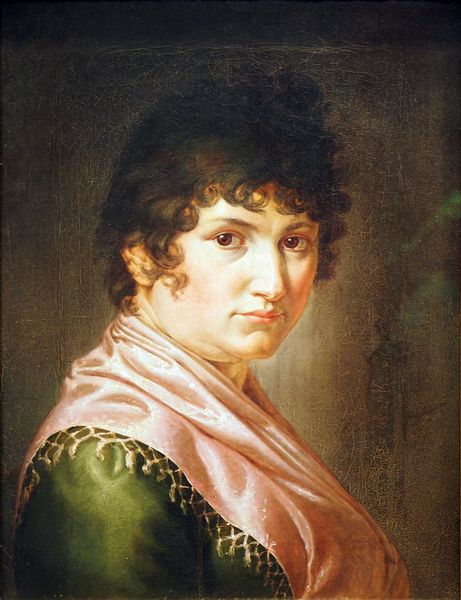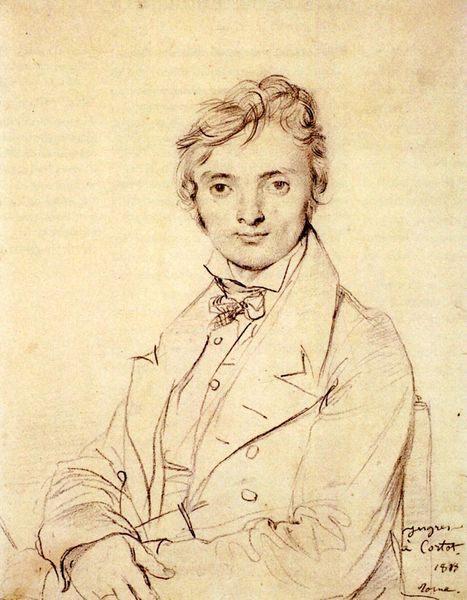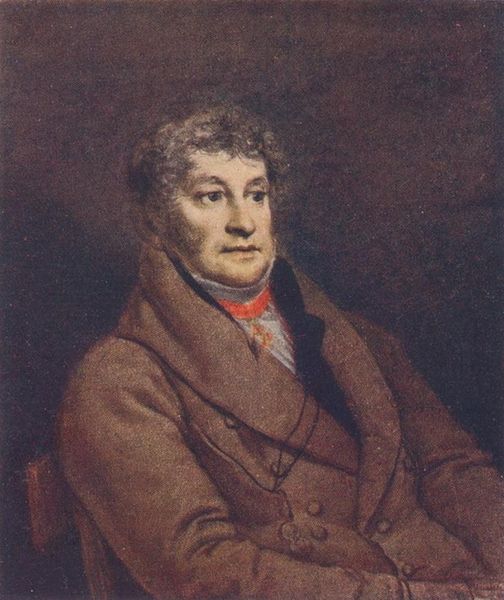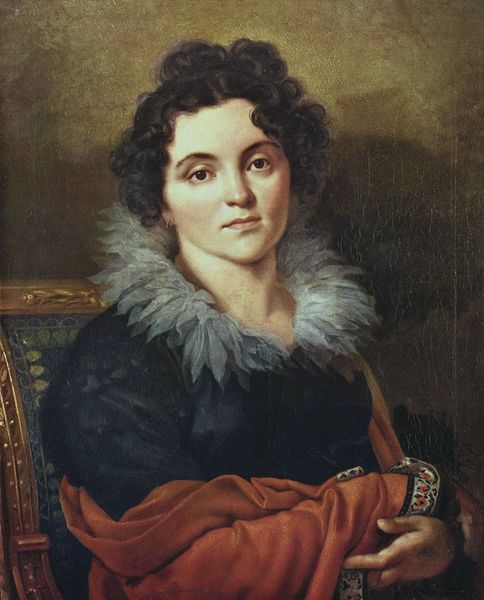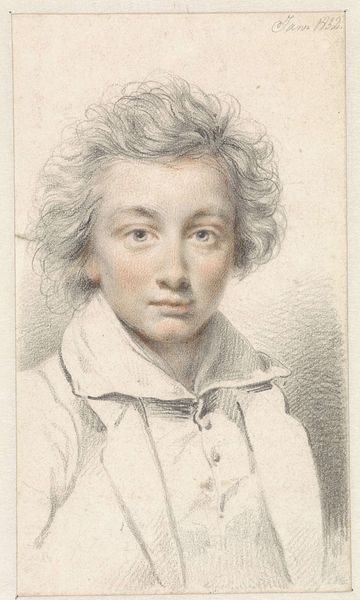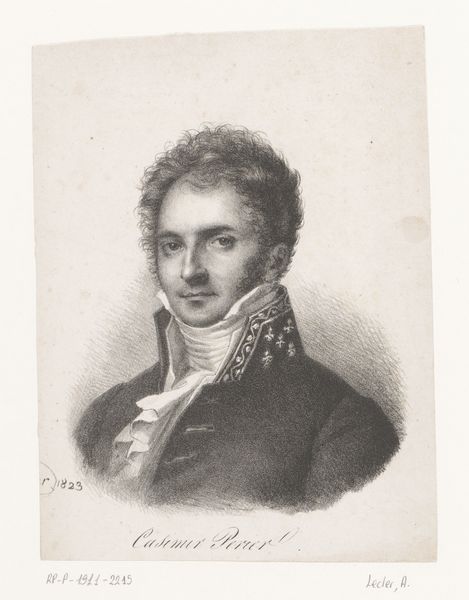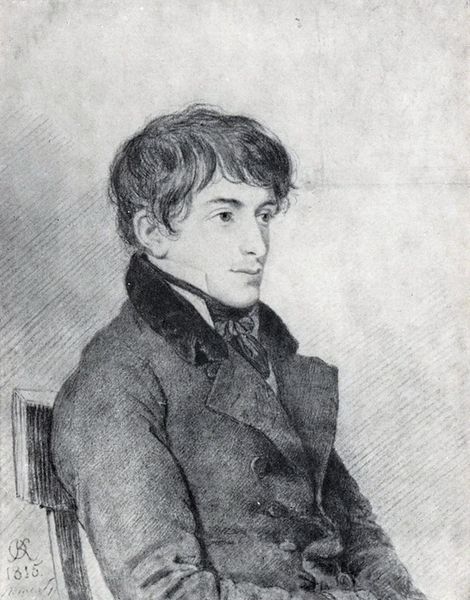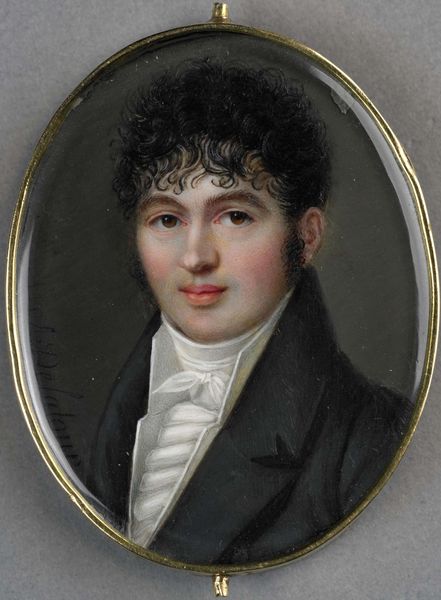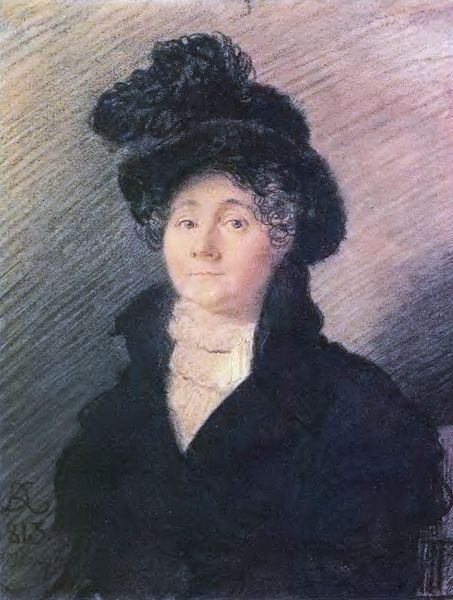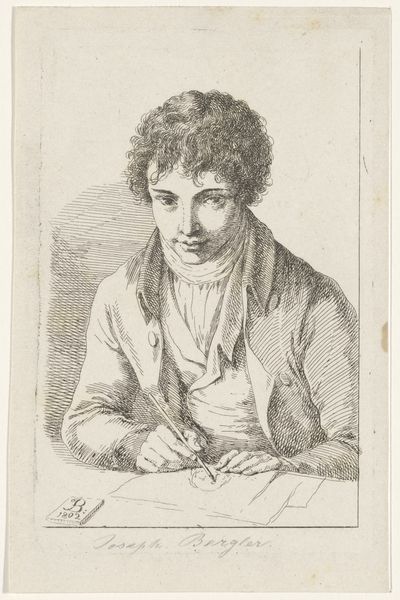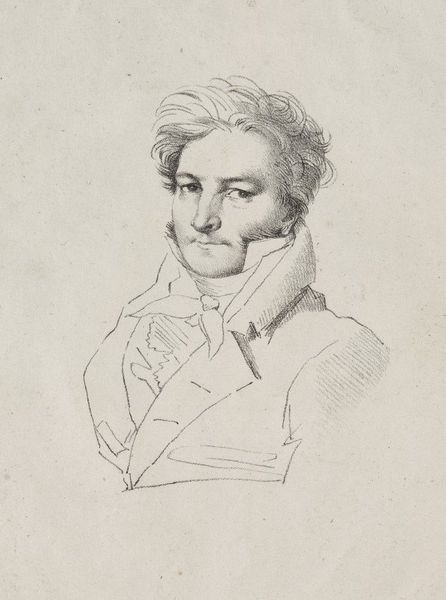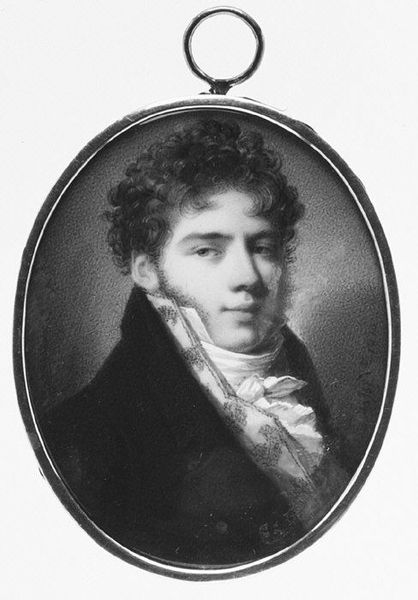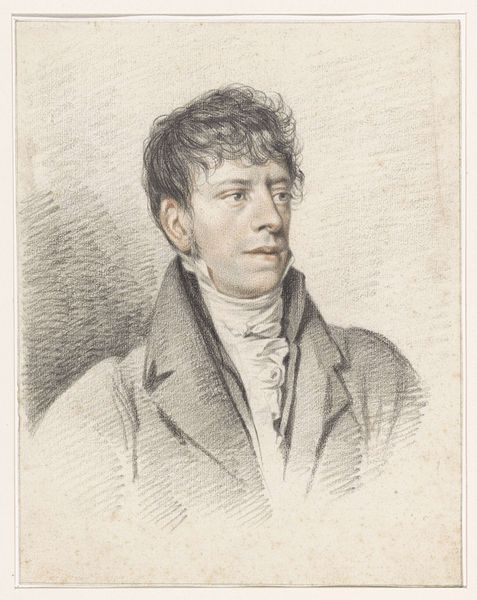
drawing, pencil
#
portrait
#
drawing
#
portrait
#
romanticism
#
pencil
#
academic-art
Copyright: Public domain
Editor: Here we have Ingres's portrait of Jean Charles Auguste Simon. It’s a pencil drawing, so the texture is very subtle, almost like a photograph. He's wearing rather fashionable clothes... How should we interpret this drawing in the context of portraiture? Curator: Consider the period's fascination with both celebrity and bourgeoisie aspirations. Ingres, as a product of his socio-political moment, found success catering to these emergent markets. Portraits, often commissioned, functioned as signifiers of social mobility. This work highlights the power dynamic inherent in portraiture itself - the artist shaping the sitter’s public image and thereby reinforcing or subverting prevailing societal norms. Note the level of detail…does it represent realistic appearances? Editor: The detail feels very realistic in the face but his eyes almost give the impression of looking slightly elsewhere, and there's almost a gentle and pleasant expression on it. Is Ingres using this to suggest some underlying aspect of Simon’s character? Curator: Perhaps, but also think about Ingres' position. He needed patronage and would craft an acceptable representation, potentially flattening complexities for broader consumption. Consider how artistic institutions like the Salon at the time influenced Ingres. What might be strategically omitted, rather than overtly stated? Is he using any specific techniques here to convey certain meanings or to fit into the academic conventions? Editor: So maybe it's less about capturing Simon perfectly and more about presenting a version that aligns with the public’s and Ingres' own goals? Looking at how idealized he is, maybe Ingres was making him more palatable to the masses? Curator: Precisely. The very act of portraying him reframes Simon’s identity. A valuable exercise might be comparing this to other depictions of the period's men; examining, side by side, how subtle variations contributed to either solidifying or unsettling class boundaries and power structures of the time. Editor: It is fascinating to consider this portrait not just as art, but a record of power and cultural trends. Curator: Indeed. Recognizing that art never exists in a vacuum provides essential tools for analyzing both creation and perception.
Comments
No comments
Be the first to comment and join the conversation on the ultimate creative platform.
